In case you hadn't noticed, barefoot running seems to have exploded in popularity recently.
From Paleo and primal enthusiasts to the Barefoot Running Society (with nearly 2,000 members), to crazy people trying to run across the country barefoot, barefoot running has certainly become a craze over the past several years -- despite significant advances in shoe technology, enhanced shoe features like better cushioning or motion control, and even the advent of special fitness shoes.
But is barefoot running safe? Or is this trend simply sending lots of excited, shoeless runners to the sports medicine doctor with foot injuries? The answer is: It depends on your approach.
If you are overweight, have poor running form, have a weak core or hips, or have spent your entire life wearing shoes for most activities, then you'll appreciate that shoes are designed to provide your foot with extra support and cushion to absorb the impact from landing and to keep your foot from moving excessively (e.g., overpronating) when running.
But even if you do fall into one of these categories, you can still successfully transition to barefoot running if you go about things in a smart way, using the following six tips for staying injury-free:
1.Take Baby Steps
Muscular adaptation to new activities takes about four to eight weeks, so allow for at least this much time to transition into barefoot running or minimalist shoes, especially if you've worn big, fancy, built-up shoes your entire life! For example, for the first four weeks, you can simply walk barefoot for 20 to 30 minutes each day and be sure to have your shoes off as much as possible, especially when standing at work or home. For the next two weeks, begin to run barefoot for very small distances on soft surfaces, like a few laps around a park or an easy jog several blocks around a soft track, just two to three times per week, and no more than one mile. Each week, gradually increase this volume, adding no more than 10 percent per week. After eight weeks, if your feet are pain-free and you feel comfortable on soft surfaces, you can start experimenting with harder surfaces, paying very close attention to how your feet feel and whether or not anything hurts (which is a good clue that your feet aren't quite strong enough yet to handle longer distances or hard surfaces).
2.Do Drills
As part of the short runs that you start doing barefoot, also train your body to run with good form by including drills, such as playground style skipping, the toe-up drill, or the lean drill. These drills will help ensure that you're running efficiently and striking the ground properly, and are a good idea to incorporate whether or not you're running barefoot.
3.Feel the Ground
If you've been wearing big, bulky, protective shoes for a long time, then your feet may have difficulty properly sensing the ground when you take them off. So try incorporating "feel-for-the-ground" activities like standing on one leg when you're brushing your teeth, standing on one leg while on a balance disc or balance pillow at the gym, standing on one leg for exercises like overhead presses, or even bouncing on one leg on a mini-trampoline a few times a week.
4.Get Flexible
One of the most common complaints among people who transition to barefoot or minimalist running is that their calf muscles and Achilles tendons feel tight or painful. This was certainly the case for me when I made the transition to barefoot running. So as you make your own transition, work on the flexibility of the back of your legs by doing calf stretches and foam rolling.
5.Get Strong Feet
If you've worn shoes your whole life, it's likely that you have weak feet muscles, since one of the primary functions of a shoe is to provide your foot with extra support. While some of the balance activities mentioned earlier will help to strengthen your foot, I also recommend standing on one leg and practicing rolling your entire body weight from the outside of your foot to the inside of the foot and back, until your foot is tired. When at the gym, it can also be helpful to do cable kick forwards and cable kickbacks while standing on one foot. If your tiny foot muscles start to burn and fatigue with these movements, you'll know you're conditioning them to get stronger.
6.Include Plyometrics
Your feet need to be conditioned to withstand the impact of the ground, since the cushioning of a normal shoe provides significant impact reduction benefits. Plyometrics are explosive exercises in which you hop, bound, or skip on one or both legs. For barefoot running preparation, side-to-side hops and single leg jumps onto a box or platform are both good choices.
Ultimately, if you toss your old shoes in the garbage and rush out to purchase minimalist shoes or simply start running barefoot at your usual volume, you may have a high risk of injury.
But if you use these six barefoot running tips to make a smart transition, you may find that it actually reduces how tired your knees and hips are after a run and increases your enjoyment and feel for the ground during a run. That was certainly the case with me. And now I frequently head out for 12-15 mile runs with nothing but my running shorts, my minimalist shoes, and a smile on my face.
Ben Greenfield is a fitness and triathlon expert and host of the Get-Fit Guy podcast on the Quick and Dirty Tips network. His book, "Get-Fit Guy's Guide to Achieving Your Ideal Body -- A Workout Plan for Your Unique Shape," will be published by St. Martin's Press on May 8, 2012.
For more by Ben Greenfield, click here.
For more on fitness and exercise, click here.